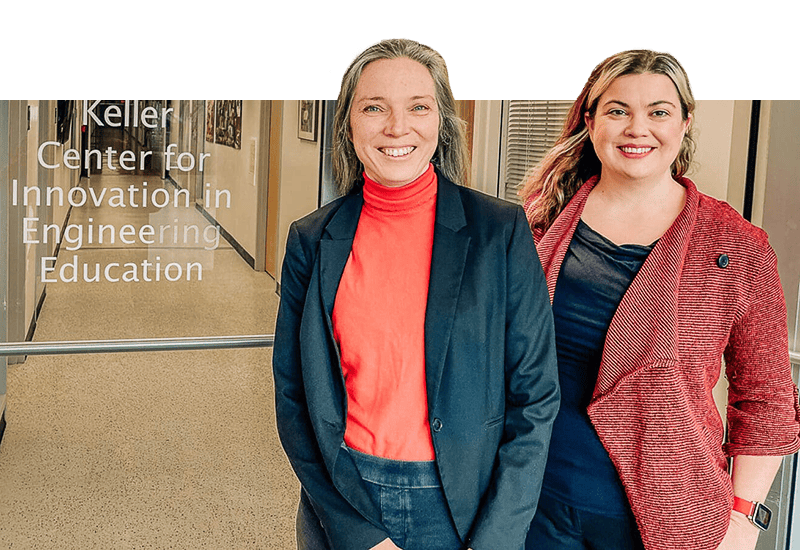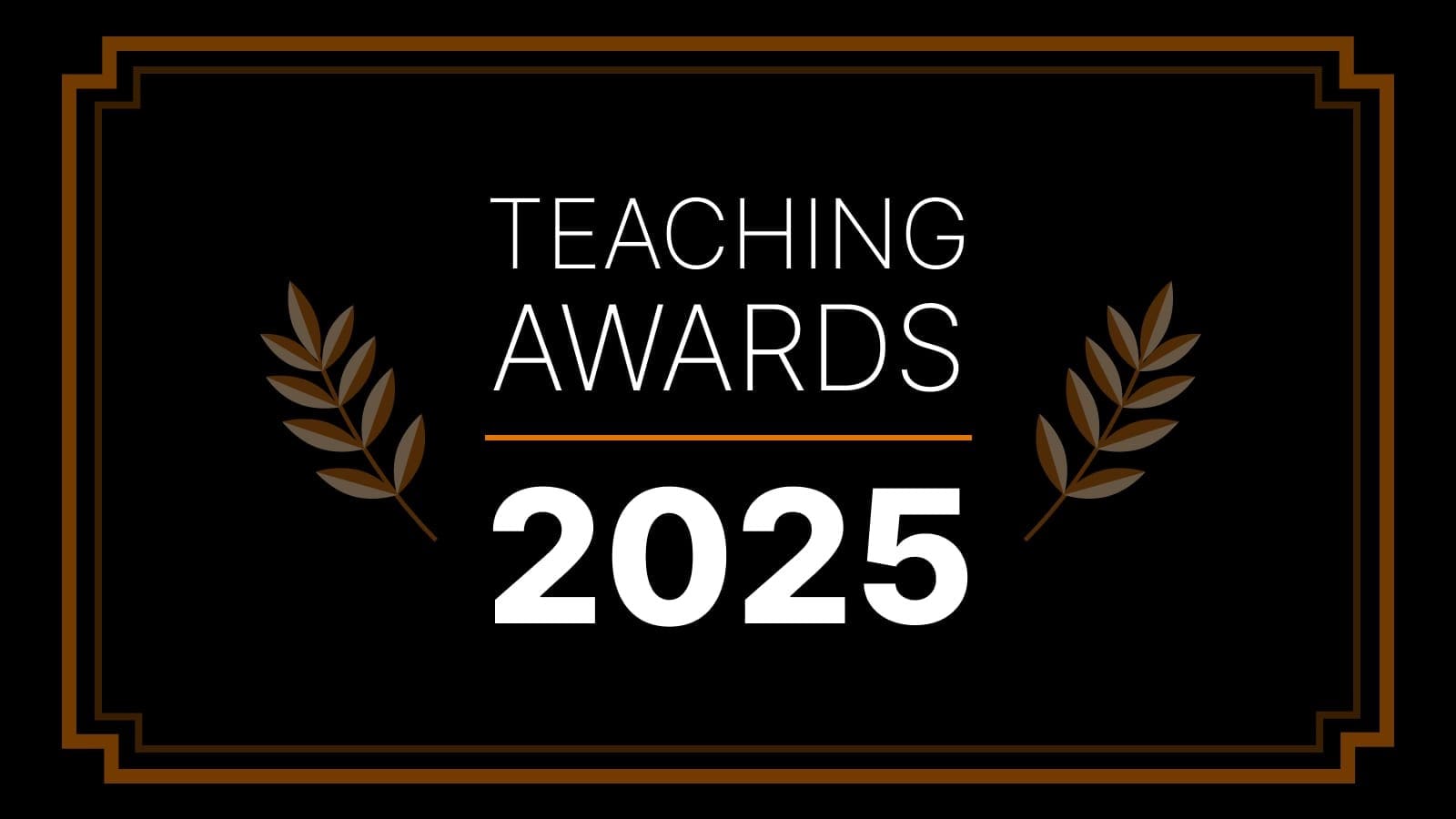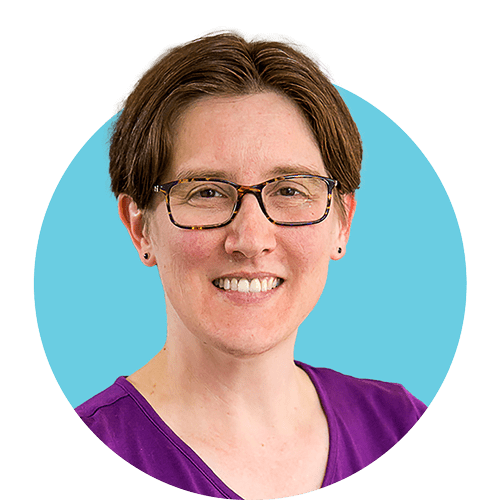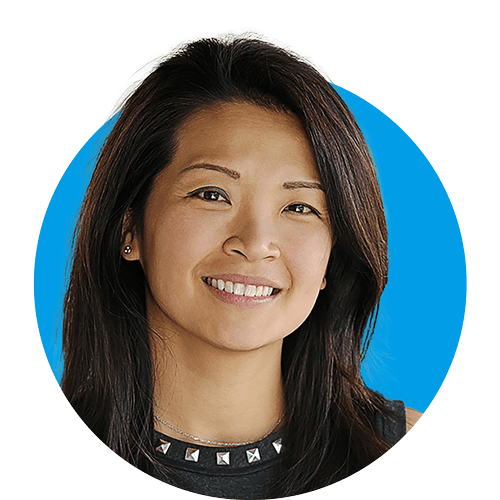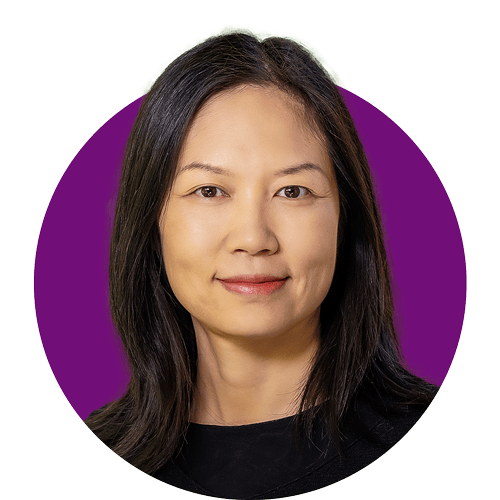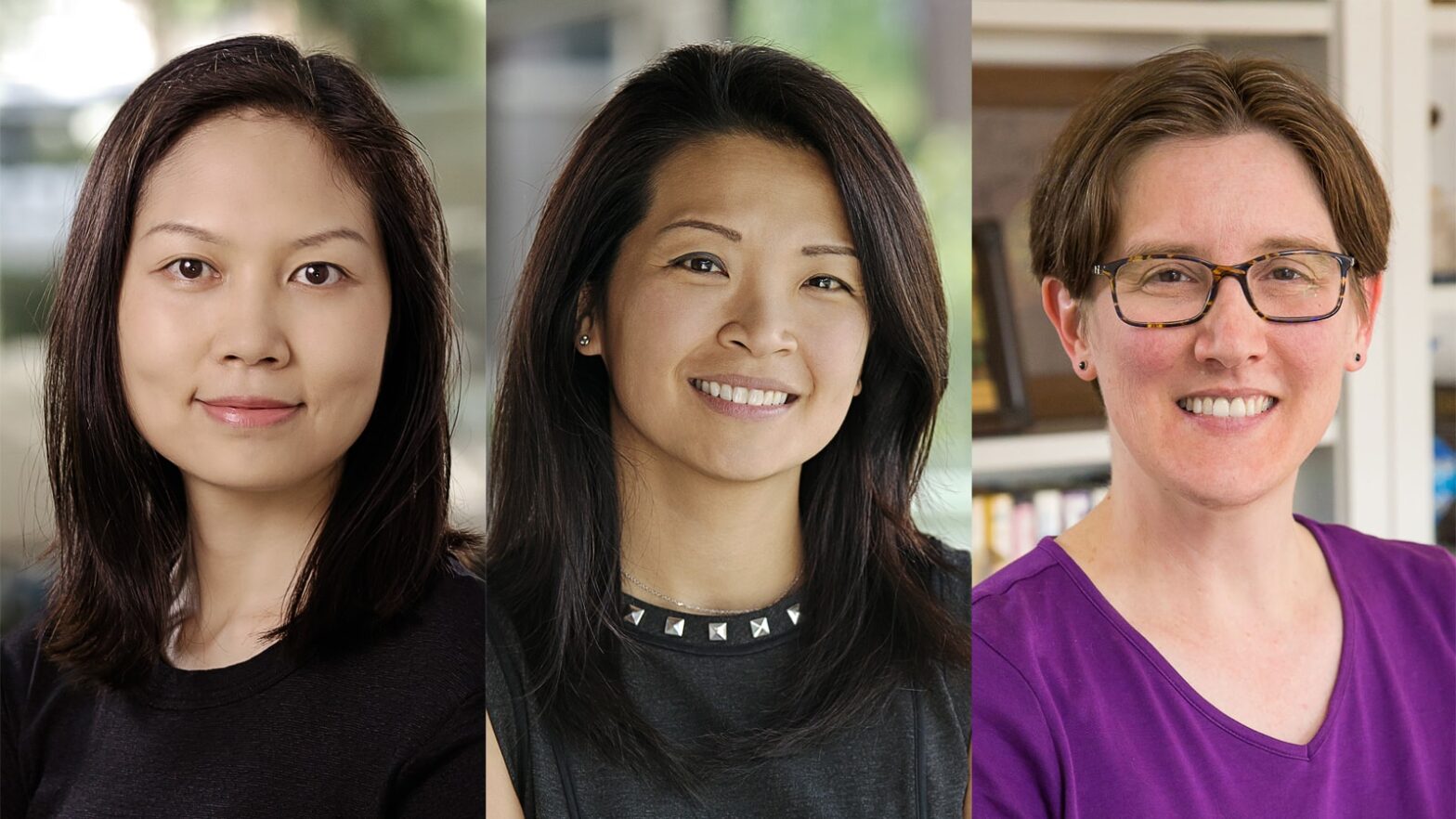
Explore and connect widely: Faculty alumnae reflect
By
on
This is from the series Women’s History Month
This year, we celebrate Women’s History Month and the 100th anniversary of Princeton’s engineering school by featuring stories, perspectives and insights from three Princeton Engineering alumnae:
Jennifer Rexford, the Gordon Y.S. Wu Professor in Engineering and a 1991 B.S.E. graduate; Yueh-Lin (Lynn) Loo, the Theodora D. ’78 and William H. Walton III ’74 Professor in Engineering and a 2001 Ph.D. graduate; and Ning Lin, an associate professor of civil and environmental engineering and a 2010 Ph.D. graduate.
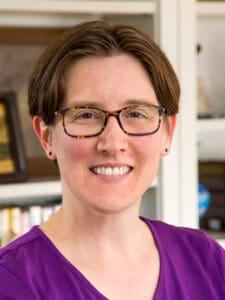
Jennifer Rexford is the chair of the Department of Computer Science and the Gordon Y.S. Wu Professor of Engineering. She received a B.S.E. in electrical engineering from Princeton, and master’s and doctoral degrees in electrical engineering and computer science from the University of Michigan. Rexford joined the Princeton faculty in 2005 after eight and a half years at AT&T Research.
Q. What reflections would you share from your time as an undergraduate at Princeton?
A. I decided to attend Princeton because I wanted the combination of a great engineering school and a great liberal arts education, while also being part of a small, close-knit community. That really narrowed down my choices! Another aspect of Princeton I only came to appreciate later was the opportunity to do research with the faculty. In pursuing my independent work projects in my junior and senior years, I fell in love with doing research, and that put me on the professional path I’ve followed ever since.
While I truly appreciate my engineering education and my overall Princeton experience, I did find the two somewhat disjointed. These days, it’s much more integrated with the rest of the University, with many students taking engineering courses, getting involved in activities hosted by the Keller Center [for Innovation in Engineering Education] and the Center for Information Technology Policy, and more. I think that’s a big win for Princeton students in general, whether engineering majors or not.
During my junior year, the campus was celebrating the 20th anniversary of coeducation at Princeton. My then-roommate Yvonne Ng ’91 and I wanted to hear the stories of the women engineering students at Princeton, and particularly the early trailblazers. We embarked on a labor of love that became the book “She’s an Engineer? Princeton Alumnae Reflect”. It became a way for us to understand the experiences of women as engineering students and the place of engineering at Princeton.
Q. What’s most exciting about your research now?
A. My research focuses on computer networking, and particularly the internet. I have long been excited about how computer science in general, and the internet in particular, lower the barriers to innovation — and enable a wider range of people to see their ideas flourish. In my own research, I am excited about making the underlying network infrastructure more programmable, so the internet can more easily evolve to be more secure, reliable and performant in the years ahead.
Q. What advice would you give to aspiring engineers?
A. I would encourage engineering students, whether at Princeton or elsewhere, to take advantage of every opportunity to take courses in the humanities and social sciences, not only to gain broad perspective or to hone your thinking and writing skills, but also because these intellectual pursuits are fascinating. I would also encourage students to resist the sense that they need to pick one passion or career over another. So often, we can find ways to combine our interests, and often engineering can offer a surprisingly relevant lens to topics that seem far afield.
Finally, I would encourage aspiring engineers to seek out mentors, whether among the faculty, practitioners, or more senior students and colleagues, and to realize that they can be wonderful mentors themselves, much earlier in their careers than they might realize.

Yueh-Lin (Lynn) Loo is the Theodora D. ’78 and William H. Walton III ’74 Professor in Engineering, a professor of chemical and biological engineering, and the director of the Andlinger Center for Energy and the Environment. She earned dual bachelor’s degrees in chemical engineering and materials science and engineering at the University of Pennsylvania, and a Ph.D. in chemical engineering from Princeton. She joined the Princeton faculty in 2007.
Q. What stands out from your time as a Ph.D. student at Princeton?
A. I really grew as a scientist and as a person at Princeton. The environment was just right for me — it’s small, and I was looking for a [research] group that was pretty hands-on, because I came here without much confidence in the direction I was going or knowing what I wanted to do. Rick Register was my adviser, and joining his group made the difference for me during my formative years of becoming a scientist.
At the same time, I think Princeton has a lot to offer graduate students. Where else can you go where you can be in a top engineering program and still have the opportunity to take classes with famous authors and thinkers? I sat in on classes with Toni Morrison and attended a seminar by Cornel West. As a double science major at the University of Pennsylvania, I didn’t take many humanities and social science courses. Here, I enrolled in a sophomore-level English class, and that’s where I really learned how to write.
Q. How did that experience lead you to your current research?
A. The work I was conducting [as a graduate student] was very fundamental; it was to understand how polymers crystallize. That taught me a lot — it taught me how to be a deep thinker, it taught me how to be rigorous, it taught me a lot of fundamental polymer physics. But I knew that I wanted to work on something more applied, taking the knowledge and the experience that I had to look at functional materials. So, I did a postdoc at Bell Labs. And then I took the time to find my comfort zone between the very fundamental and very applied, and that’s where my group currently sits.
We’re interested in understanding structure-function relationships of electrically active materials. We use them to make solar cells, we make transistors, and, in particular, we’re excited about transparent solar cells that can be integrated into windows to provide point-of-use power sources — to run smart windows that can cut down on building energy consumption. And it ties into the dual energy challenge that we often talk about, which refers to the need to increase energy access and living standards around the world, while reducing carbon emissions on a large scale.
Q. What advice would you share with students who are just getting started in science or engineering?
A. When I talk to prospective students, I tell them, ‘You know who you are. Be true to yourself and know where your comfort zone is.’ And then, you take two steps outside your comfort zone. You don’t take 10 steps outside your comfort zone, because then the learning curve is too steep and you’re bogged down by all the nomenclature and all the things that you need to learn before you can make progress, and that can be very discouraging.
But if you take two steps outside your comfort zone, that’s where you can maximize your own personal growth, your satisfaction and your impact on the world. Today, the most impactful work is at the boundaries of disciplines, so being open to exploring, collaborating and communicating with people who are very different from you — whether by background, experience or expertise — that’s how you’re going to maximize impact.
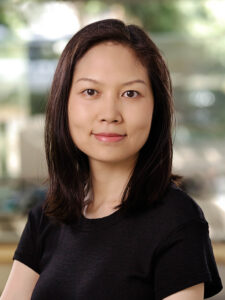
Ning Lin is an associate professor of civil and environmental engineering and an associated faculty member of the High Meadows Environmental Institute, the Andlinger Center for Energy and the Environment, and the Center for Policy Research on Energy and the Environment. She earned a bachelor’s degree in civil engineering from the Huazhong University of Science and Technology; and a master’s degree from Texas Tech University and a Ph.D. from Princeton, both in civil and environmental engineering. She joined the Princeton faculty in 2012.
Q. What were some of your experiences as a student at Princeton, and how did they shape your career?
A. I was super excited to be at Princeton, but early on I felt behind because other students seemed to have more preparation and background. But I quickly saw opportunities in the classroom. Of course, Princeton courses are very rigorous, but the professors always start from the basic concepts and they always welcome students who have little background in the topic. My classmates were also friendly and willing to help.
The course requirement for [civil and environmental engineering] graduate students is 10 courses, but I ended up taking over 20 courses in different departments: engineering, natural sciences, public policy, applied math. My adviser, Erik Vanmarcke [now an emeritus professor], was very open and he supported me exploring ideas through courses and interacting with other scholars and students. I built a strong foundation in math and physics, but at the same time broadened my horizons, which led to my cross-disciplinary research on hurricane hazards and risk.
My initial field of research was risk analysis in engineering, but I’ve become more focused on hurricane hazards and risk. I had learned wind engineering and structural engineering before, which means looking at how we design structures to resist strong wind effects, but when I came to Princeton I got more interested in hurricane science and the effects of climate change.
Q. How does your research bring together climate science with engineering and policy?
A. Much of my research has been focused on the risks of different hazards induced by hurricanes: extreme wind, storm surge, rainfall and flooding. I also model the hurricanes themselves using physical models and statistical models. A big focus is on the effects of climate change on hurricane features and hazards, and the resulting impacts on engineering systems and communities and social systems.
Traditionally, engineering design has been based on historical records of environmental loads, assuming that the future will be similar to the past. But these infrastructure systems will be used for a long time — 50 or 100 years — so, they will be affected by climate change, including changes in wind, temperature, precipitation, sea level and storm surge.
We have to incorporate understanding of climate change into our design, but we don’t have a framework to do that yet because it’s a whole new idea for design, and the climate science itself is still developing and has a lot of uncertainties. In my research and also in my teaching, I try to incorporate climate change into risk analysis to develop a new framework for engineering design and decision-making.
Q. What insights would you share with those who are just beginning their careers in engineering?
A. When I was an undergraduate, I thought engineering was a narrow discipline, but now I feel that engineering is getting broader and becoming more connected to social science, natural science, policy and art. And our society is becoming more connected and more global. So, engineers have to take on challenges and solve problems on larger scales, including problems like climate change. I would encourage engineering students to broaden their research scope and make friends in various fields. Engineers should be prepared to tackle big problems related to the well-being of society.



